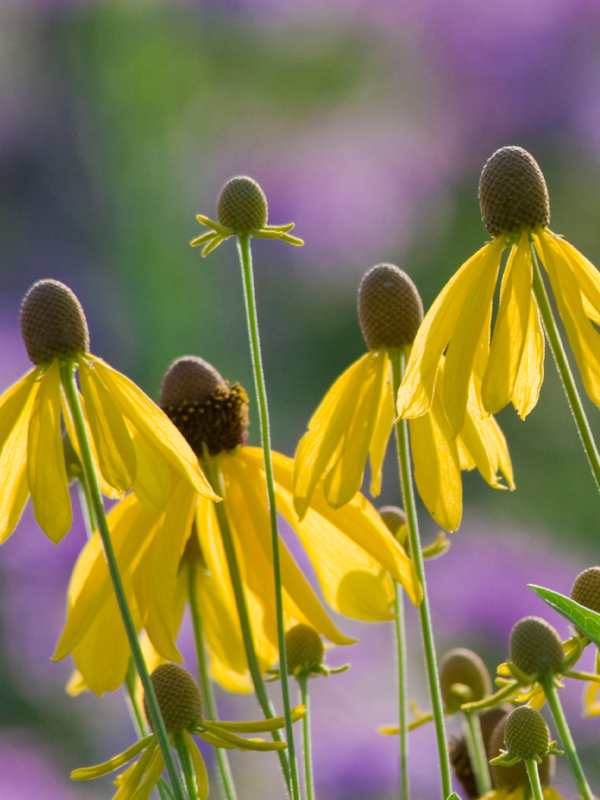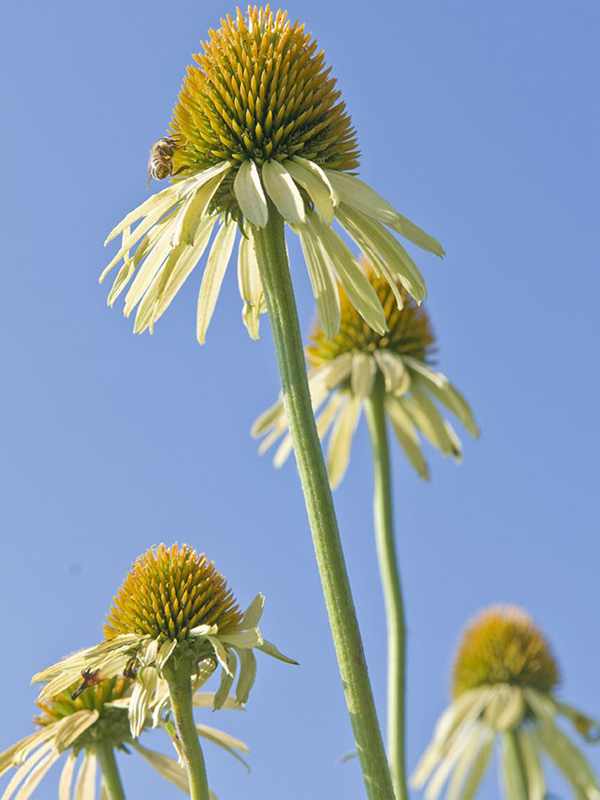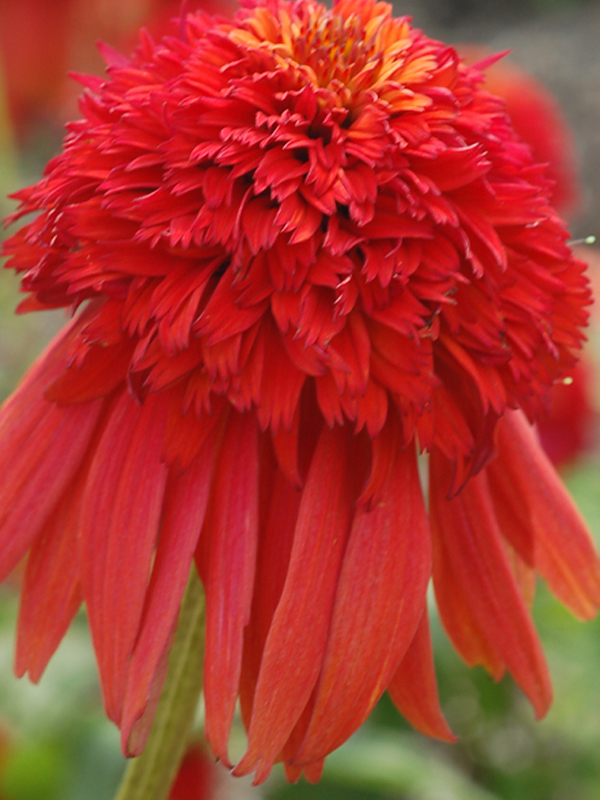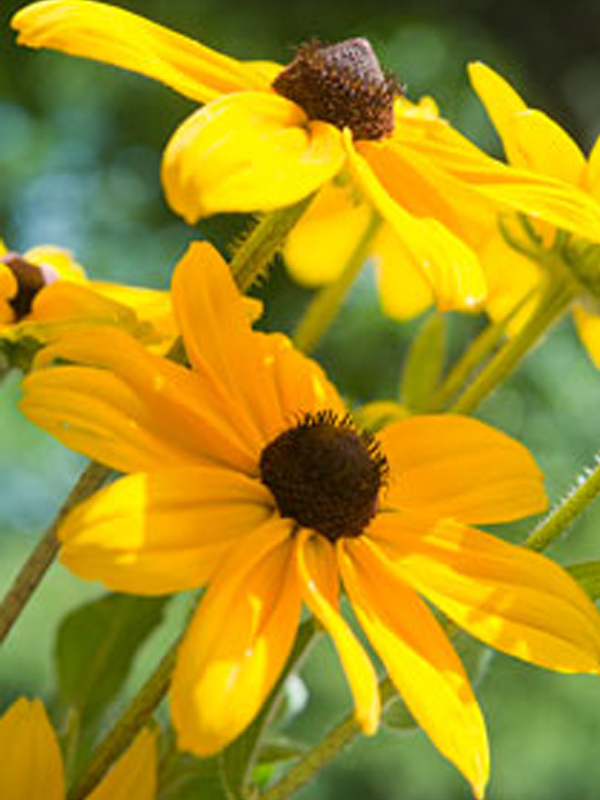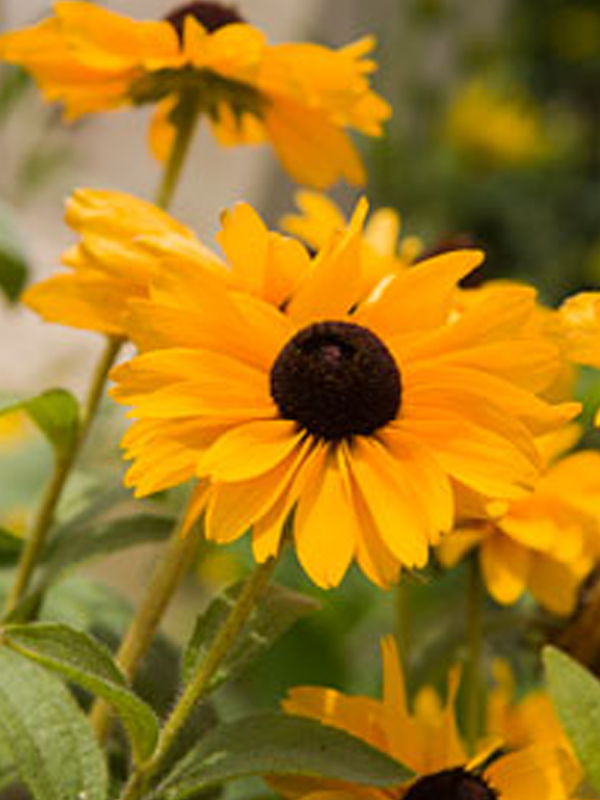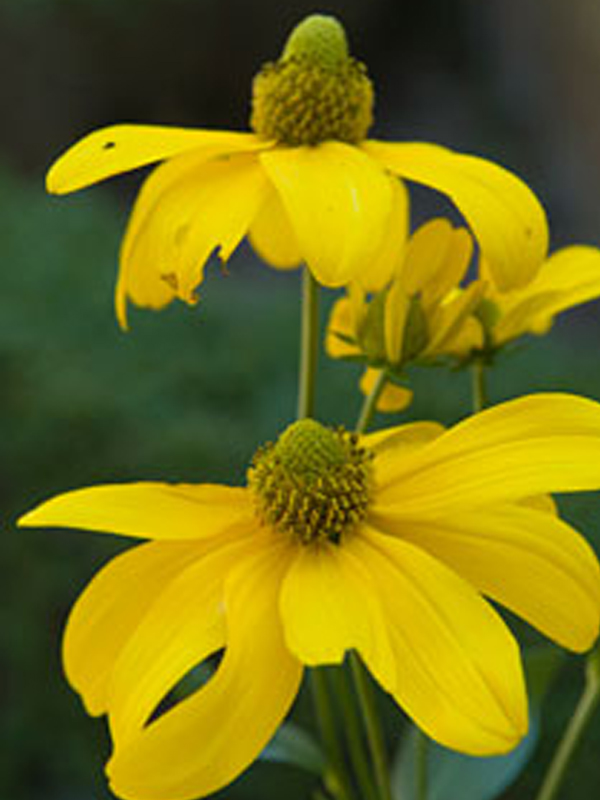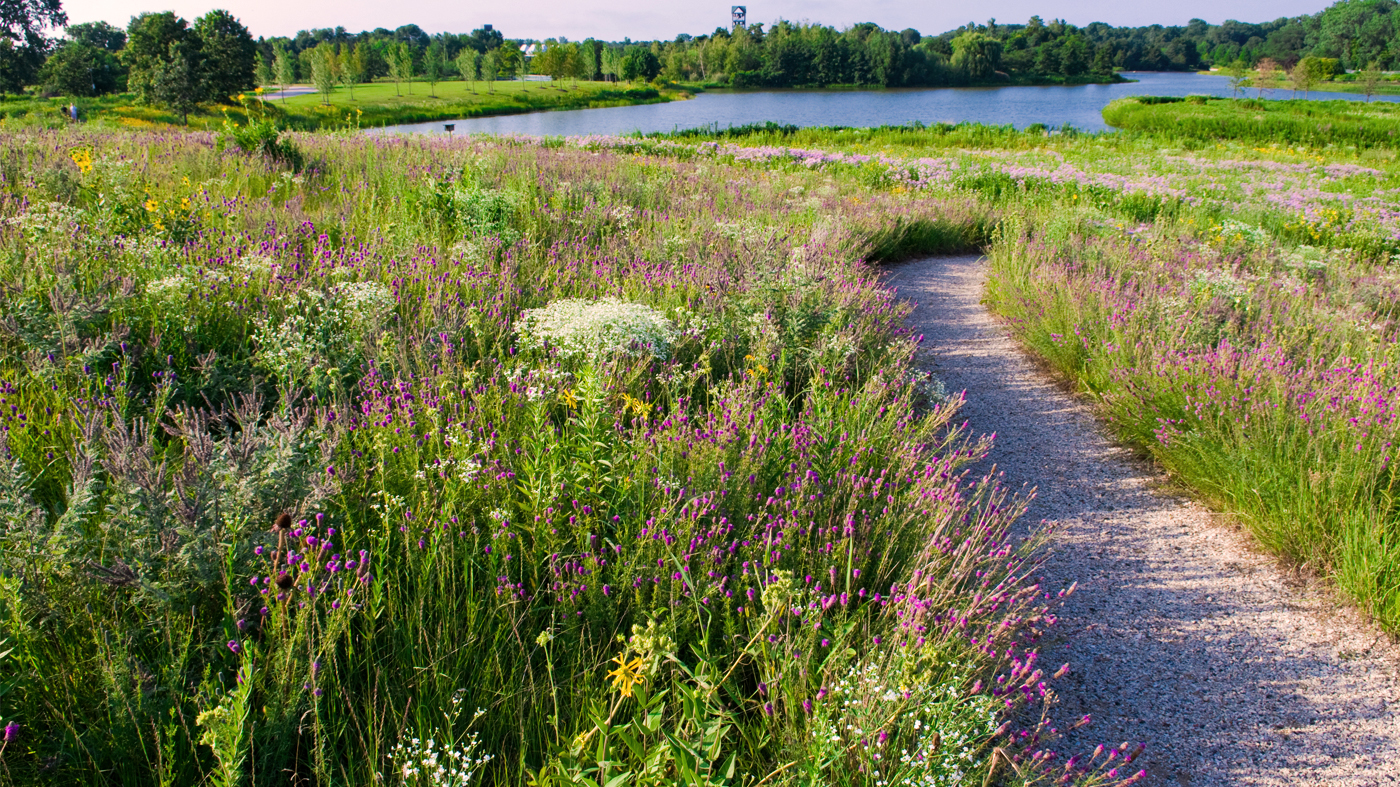
Take a late-summer stroll through the Dixon Prairie and see golden grasses sparkling like jewels with touches of color, and the lake rippling marvelously in the wind.
The black-eyed Susan and coneflower plants you spot here may seem sparse, lanky, and scattered unlike the neat clumps or broad sweeps that can be seen on Evening Island and, perhaps, in your garden.
Over the last few decades, plants once native to midwestern prairies have been welcomed into gardens. But in our front yards, they often don't look much like they did in the prairie.
When we grow prairie species in the garden, even in the same extreme and unpredictable climate, they are living in altered conditions from the ones in which they evolved. Prairie plants behave differently in our gardens for a number of reasons, according to the Garden's prairie and river ecologist.
- Soils and many other conditions have changed as the Chicago area has been settled and developed. Even if plants are growing in the same spot where their ancestors grew 200 years ago, they are likely facing altered circumstances.
- There are fewer habitat types available today to nurture the plants that evolved there. Once, the area had a diversity of habitats including dry, sandy dunes and marshy pools along Lake Michigan; wetlands and streambeds; gravel hills; and broad, moist prairies and savanna with scattered groves of tough, fire-resistant oaks. Since then, numerous wetlands have been drained and filled. Oaks were cut for lumber or to make way for roads. Prairie was peeled away and the soil plowed. Then, many of those farms were paved and became subdivisions.
- Our city buildings funnel scouring winds and create deep shade in places once brightened by open sky. Concrete, asphalt, and masonry store heat and then radiate it — making summer hotter for plants. Rain is channeled into storm sewers and treatment plants rather than replenishing the deep reservoir of groundwater for all plants.
Prairie Style
The Dixon Prairie, which wraps around the south and west sides of the Garden, has been reconstructed to include six types of native northeastern Illinois habitat, with plants that fit in those niches, growing the way they naturally do.
When you see black-eyed Susan (Rudbeckia hirta) here, for example, it appears as a stray sunny face, but rarely as the kind of bright bushy clump we are accustomed to seeing in manicured gardens.
In the prairie, black-eyed Susan has much more competition from other plants for water and nutrients, O'Shaughnessy says. It grows in much leaner soil that doesn't push it to create leaves and flowers. In the prairie, densely surrounded by grasses, it must grow tall and slender to reach up to the sun — and it gets all the support it needs from surrounding plants.
Home-Grown Pioneers
Today, many gardeners try to fix the altered soil by fertilizing and digging in manure, compost, and other organic matter that makes it far more nutrient-rich than the original prairie. We water the lawn and spray the bugs. We grow plants in isolated clumps, not mixed in with companions and competitors.
We tend to like our plants compact and well-behaved and we like to see a big punch of color. So plant growers often select shorter, bushier examples of species such as Showy black-eyed Susan (Rudbeckia fulgida var. sullivantii) and propagate them as cultivars to appeal to gardeners. They also create hybrids from several native species that have qualities that work in gardens, though not in prairies.
Black-eyed Susan is a good candidate for gardens because it is a "pioneer plant" — short-lived, but opportunistic and able to grow in a wide variety of habitats and take hold in disturbed soil. No soil is disturbed as much as that of the average perennial garden.
The prairie plant perhaps most loved in gardens is coneflower. Usually it's purple coneflower (Echinacea purpurea). Yet the evidence suggests purple coneflower was rare in northeastern Illinois before we started gardening, O'Shaughnessy says; the most common species in the prairies around here was pale purple coneflower (Echinacea pallida). When you see itin a remnant or restored Chicago-area prairie today, she says, it most likely escaped from a garden.
Purple coneflower is the favored garden species because it can grow in a broader variety of habitats, she says. Pale purple coneflower is native to dry prairies with fewer nutrients than the enriched soil of perennial beds.
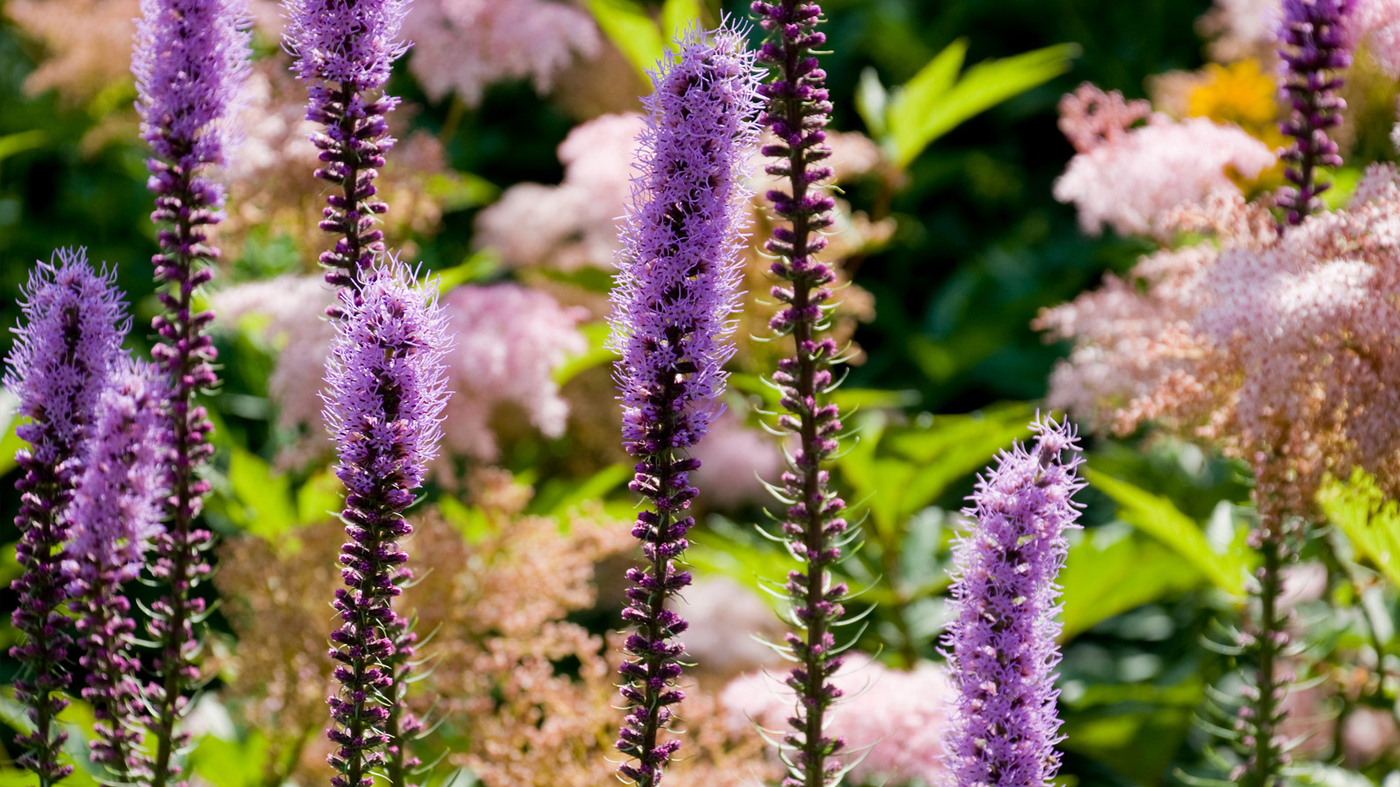
So it is with blazing star. Rough blazing star (Liatris aspera) thrives in the Garden's gravel hill prairie and sand prairie, while prairie blazing star (Liatris pycnostachya) is most likely the species that was most common in the native prairie. But the species most often found in gardens, and most often the basis for cultivars, is marsh or spike blazing star (Liatris spicata).Though it's mainly native east of here, marsh blazing star is better adapted to soil that is often watered.
Choose Wisely
It's crucial when choosing native plants for our gardens to select those that will thrive in our gardens as they are today. "Right plant, right place" applies as much to native plants as it does to imported perennials. Just because a plant may have grown in a particular spot in 1830 does not mean it will thrive in a garden at that location now if the conditions have been drastically altered.
At the same time, it's important to choose natives that will support native insects, birds and microorganisms. That's one reason ecologists stress buying plants that are locally grown from seed that evolved in the vicinity. Strains of the same species from elsewhere have not co-evolved in the same relationship with local animals, which may depend more and more on our gardens for food and breeding places as their native habitat is degraded by development and climate change.


